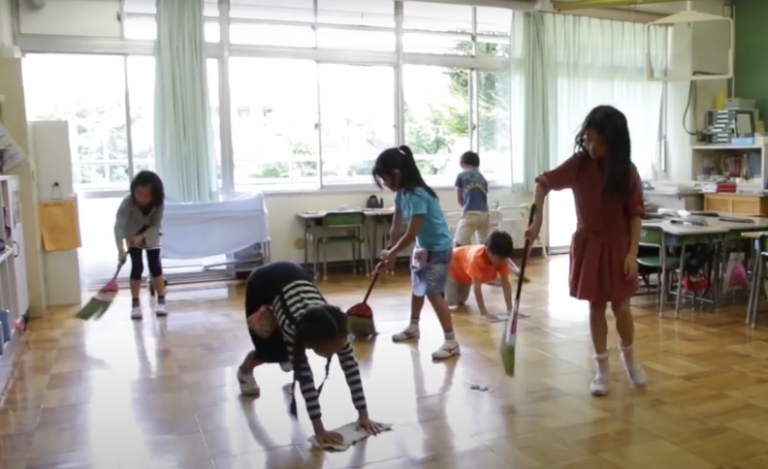Parent Power – Rewards and Consequences
How to Provide Your Child with Effective Feedback
by Bob Doman
Rewards and consequences are the tools we have as parents, or, for that matter, as a society, to provide feedback, guidance, encouragement, and instruction, and to maintain order. Lack of consistent quality feedback leads to ambiguity, confusion, poor outcomes, and potentially chaos.
We need to reward the behaviors or things our children do that we like and want to see increase. Behaviors we do not like or want also require appropriate feedback. Rewards and consequences are the tools we have, the power we must use to teach our children, encourage them to do more of what we want, and dissuade them from doing things that are harmful or that will negatively impact their lives and futures.
What is a behavior?
Everything we do can be defined as a behavior. For our children, it’s everything from walking and talking to reading, following directions, complying with requests and rules, and interacting with us and others—essentially, everything they do.
Sadly, to many, the word “behavior” implies “bad behavior.” “Johnny has a behavior problem.” As stated, virtually everything our children do, whether it is helpful or harmful, is a behavior and is influenced by our response to it.
Feedback
Without feedback, children are in a vacuum, not knowing “Should I?” “Shouldn’t I?” “Does it matter?” or “Who cares?” Lack of quality feedback deprives the child of guidance and produces insecurity, anxiety, doubt, and poor outcomes. Unfortunately, many children receive poor or inconsistent feedback from their parents, schools, and society as a whole.
Credibility—positive environment
To a significant degree, our influence is determined by our credibility. To create credibility, it is important to establish your primary role as loving, supportive, encouraging, and being on their side. The core of your child’s perception essentially reflects how positive or negative your overall interaction is with them. To have a positive environment, you should create a ratio of positive to negative feedback of 3:1 or 4:1 or greater. Part of the positive-to-negative equation is intensity. The stronger the reaction/feedback intensity, the stronger the impact. Ten smiles or “good” or “nice,” will not, in balance, equal one major hissy fit. Sadly, many parents reserve the intensity for the negative reactions.
When responding to a behavior, a very important note is that our primary focus is not to specifically encourage or stop that immediate behavior, but to build those behaviors or extinguish them over time. Our measure of success or failure is the long-term results. Are we seeing more of the positive behaviors and less of the negative behaviors? If not, we have not succeeded and need to modify our response and feedback.
Consistency
A phrase often heard by parents from their children is, “It’s not fair.” It’s a safe assumption that you are not being consistent if you hear this from your child. Children seem to have an innate understanding of injustice, and inconsistency is at the top of their list of injustices. “I did this yesterday, and it was okay; why am I being punished for the same thing today?” Consistency is vital to build credibility, not appear unjust, and have the child accept and learn from your response.
Did you mean it?
Many responses children receive for their “bad” or inappropriate behaviors are what I refer to as the equivalent of a 5-cent speeding ticket. Many of the supposed positive responses are not much stronger. I have referred to intensity as one of the foundational pieces of neuroplasticity. If something happens without sufficient intensity, our brains do not respond or change, and no learning occurs. One of the best gauges of the effectiveness of your responses is whether they worked. I often hear from parents things like, “I keep punishing the behavior, but he still does it.” If this is true, then you have not actually punished the behavior. You may have said or done something but did not punish the behavior. The definition of punishment is a response or consequence to a behavior that decreases the frequency of the behavior. If you haven’t changed it, you haven’t punished it, and doing something negative that doesn’t improve the behavior is cruel, and counterproductive, creates a negative environment, destroys your credibility and effectiveness, and harms your relationship with your child.
The best consequences are the ones you only need to use once or twice. Do not be afraid when a consequence is warranted to go big. As an example, an age-old consequence has been writing sentences. Johnny picks on his little sister, creating all kinds of issues for the family. His consequence might be to write the sentence 10 times: “I have to be nice to Mary, and I cannot and will not pick on her.” I suspect that for many boys, this task would result in a lot of grumbling, and ten minutes later, they would be finished, and fifteen minutes later, Johnny would be picking on Mary again. What if Johnny had to write that sentence 300 or more times? This would probably take many hours; Johnny will have missed some things he would have liked to do, like his baseball game, and had said to himself 300 times while writing it, “I have to be nice to Mary, and I cannot and will not pick on her.” We call this frequency, and frequency changes the brain, which means learning occurs. Hopefully, this consequence will only be used once or twice to change the behavior.
It should be noted that consequences may only be effective if the overall balance between positive and negative, as mentioned, is 3:1 or 4:1 or greater. In a negative environment, the child may learn that they only get real attention if they do something “bad.” In this scenario, bigger consequences can result in more “bad” or worse behavior.
“Bravo”
We work with many families in Europe, and as we do with all our families, we have them post videos to their NACD Portal showing us how they implement the various activities we give them. When reviewing these videos, the word we often hear as they implement their child’s activities is “Bravo.” “Bravo” is a nice positive word, which essentially means, “Well done.” However, what we often see is “Bravo’’ meaning “you tried but got it wrong,” or “Bravo” meaning “we’re done,” or “Bravo” meaning “let’s do what’s next,” and “Bravo” meaning “good,” or “you did well,” or “you got it right.” In a thirty-second video we could hear ten “bravos.” This is not terribly effective. Although the tone is positive, which we strongly encourage, there isn’t much delineation between positive, negative, and neutral feedback. In such situations, it’s not that we want or need strong negative feedback for getting something wrong; it’s a matter that the positive needs to be much stronger. The response to “wrong” should be simple acknowledgment, such as “Oops, let’s try again,” but the response for getting something correct or done well should be robust and powerful.
Attention
Any attention is potentially reinforcing. Attention must be given with the knowledge that it has the potential to be reinforcing regardless of the intention. Many of our children’s negative behaviors begin as simple attention-getting behaviors. A child’s smile can elicit a smile from Mom. The smile got Mom’s attention, and she smiled back or picked up the child and rewarded the behavior, building that behavior. Johnny burps, and Mom responds, “Johnny, don’t burp.” The burp elicited attention from Mom, which potentially reinforced their behavior. “Johnny, don’t burp” is not a consequence. It’s attention, and any attention from a parent is potentially reinforcing. Of greater consequence are the parent’s response to minor possible hurts—hurts being little physical bumps, to a hurt feeling. If Mom overreacts, picks up the child and loves all over them, the odds are good that the crying doesn’t stop, but increases because of Mom’s attention. This reinforces the child’s overreaction, which essentially is a lie, and can potentially help teach children to lie. These children often become the “drama queens” because it works. Parents mistakenly perceive all the attention they give their children as a display of love and a good thing. Attention must be given judicially, understanding that it can be very influential.
In negative environments, attention gains even greater significance.
Opposite incompatible behaviors
Understanding the concept of opposite incompatible behaviors is very helpful for parents in focusing, creating a positive home environment, and successfully managing and developing their children.
Opposite incompatible behaviors reference the reality that you can’t be good and bad or try and not try, be responsible or irresponsible, etc., simultaneously. In our efforts to create good attitudes, work habits, and other behaviors, we always want to be aware of the opposite incompatible behaviors and focus primarily on building and reinforcing the positive preferred behaviors. This applies across the board, from behavior problems that need to be turned around to increasing focus on academics or responsibility with chores. When possible, focus on building what we want with positive attention/rewards, and when we need to use consequences, do so effectively and judicially.
- Create a positive environment.
- Provide consistent, definitive feedback.
- Be cognizant of the power of attention.
- Focus on rewarding the behaviors you want to build.





